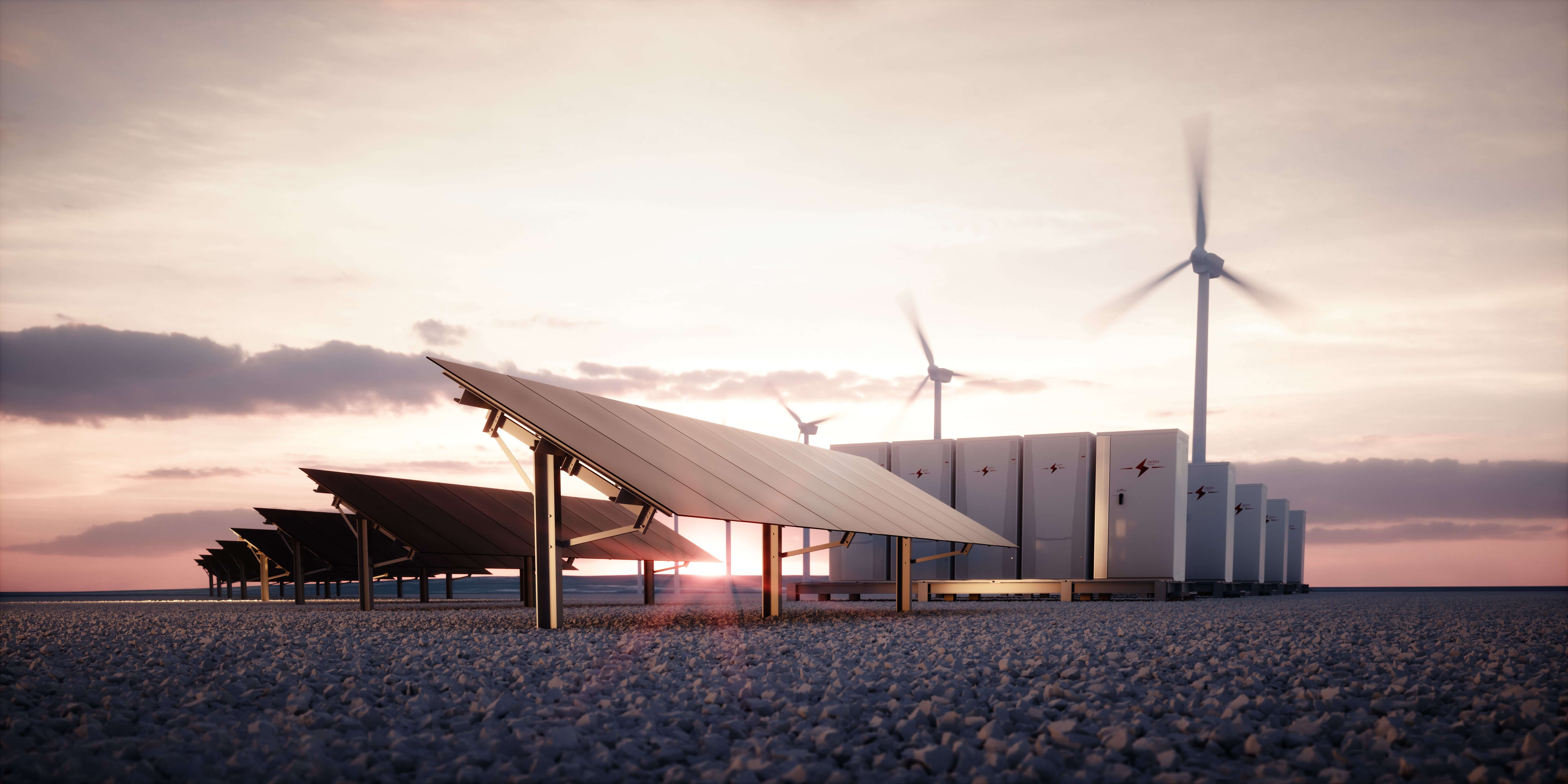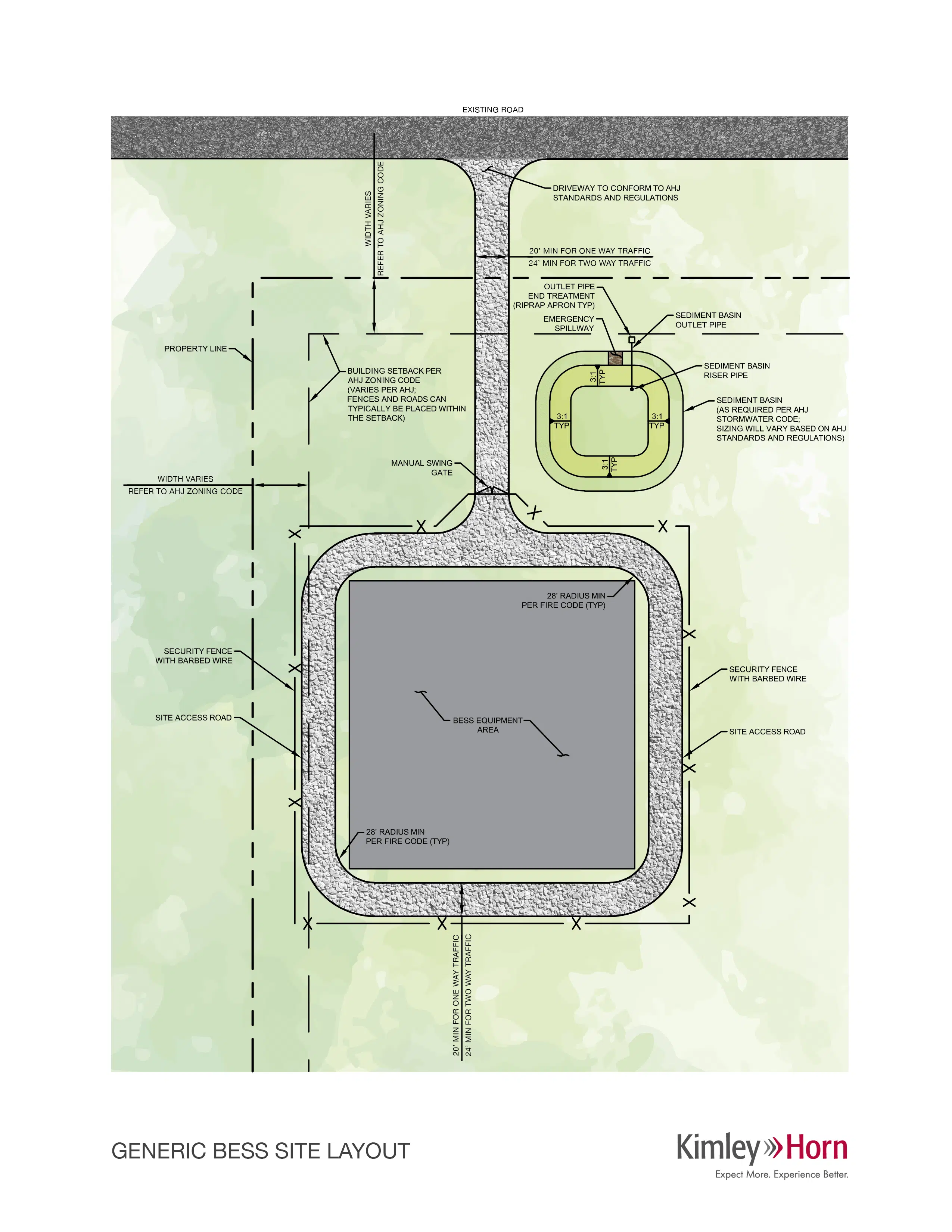- December 3, 2021
- Perspectives
Eight Battery Energy Storage System (BESS) Site Requirements You Might Be Forgetting

In part one of our three-part series, our experts cover the site layout elements and requirements that can impact a BESS project.
The ability to store the electricity generated by solar panels and wind turbines is the key to getting energy to users when they need it—during outages, when the sun is not shining, or the wind is not turning the turbine’s blades. Storage helps balance electricity generation and demand—creating a more flexible and reliable grid.
Battery Energy Storage Systems (BESS) are one way to store energy so system operators can use their energy to soft transition from renewable power to grid power for uninterrupted supply. Ultimately, battery storage can save money, improve continuity and resilience, integrate generation sources, and reduce environmental impacts.
The energy storage market in the United States could grow to as much as $426 billion by 2030. Several states have declared goals, targets, and mandates for energy storage. As engineering, procurement, and construction (EPC) companies and developers race to keep up with the demand of system owners who want BESS, understanding common site layout considerations and requirements can save you from missteps that can add costs and set your project back several months or more. Site constraints, requirements to obtain entitlements and construction permits, requirements of the offtaker, and operation and maintenance safety and efficiencies will vary by jurisdiction, the most common site plan elements that could surprise you when it comes to cost, layout, and scheduling include:
1. Fire Code Requirements
Smaller commercial developments in or near cities may have stricter requirements from building and fire departments than utility-scale projects in isolated areas. Providing adequate access and understanding minimum turning radius and width for access roads will impact your site layout. Sites may also require an internal fire suppression system since it may not be economical to run a water line.
2. Security Fencing
BESS and related equipment typically require a 6’ chain link with 1’ barbed wire to prevent unauthorized access.
3. Erosion Control
Requirements range from temporary perimeter controls to costly temporary sediment control basins.
4. Permanent Stormwater Measures
Requirements range from no requirements to water quantity and/or water quality requirements for which a permanent stormwater feature such as detention ponds or ditches must be designed, installed, and maintained over the life of the facility. Equipment must be raised a minimum of 1-foot above 100-year water surface elevation (site specific hydrology study required).
5. Integration with the Electrical Infrastructure
Distribution or transmission system level interconnects may require extra real estate for utility infrastructure.
6. BESS Augmentation
As batteries age, their capacity to hold a charge diminishes. A BESS augmentation strategy that maintains the performance of a system may include rotating batteries in and out of the system, adding more capacity, or both and needs to be considered within the buildable area of the site.
7. DOT right-of-way
If your site is adjacent to DOT right-of-way, your driveway may be subject to additional requirements such as an asphalt or concrete driveway or culvert/ditch improvements in the right-of-way.
8. Foundations and Structural
The foundations at battery storage facilities can vary drastically from site to site based on the soil conditions; battery size, weight, and quantity; and the local availability of technologies and materials and can have a significant impact on cost and schedule. A variety of foundation options should be preliminarily designed and reviewed, such as driven piles, helical piles, concrete grade beams, slabs, and drilled piers.
The sample site layout below will give you an idea of how these site plan considerations may impact a BESS project.

Local Partners Are Your BESS(T) Bet
As we continue to see investment in renewable energy, BESS will grow further in popularity and feasibility. Adding BESS to your solar or wind site can save money, improve reliability, and have positive impacts on the environment. This is a new, rapidly evolving technology and as experts in renewable energy developments, we’ve seen our fair share of developers and EPCs experience project delays and added expenses as they navigate the process of adding BESS to a site. Since requirements and conditions largely vary from state to state and jurisdiction to jurisdiction, including the right local partners on your team to guide you through permitting, electrical, and structural can pay off big in keeping your project schedule on track and avoiding common pitfalls.
To learn more about BESS for your project, reach out to your local Kimley-Horn partner or contact us.
About the Authors

Chris Hanna
Chris is an electrical engineer focused on the design of power distribution systems for commercial scale solar PV, BESS, and EV charging facilities. His technical expertise includes electrical power systems design, lighting design, cellular/telecommunications design, and electrical/communications utility coordination.

Nick Lamek, PE
Nick is a professional engineer focused on civil site development for Solar PV and BESS facilities. He has worked on over three gigawatts’ worth of Solar Generation and BESS facilities over the past five years in 15 states across the country. His specialties include site planning and layout, grading design, drainage design and stormwater management.

Jon Manning, PE
Jon is a professional engineer and project manager focused on structural engineering in the renewable energy industry. His specialties include foundation design, soil-structure interaction, value-engineering, concrete, and steel design. Jon has extensive experience working on utility-scale solar, wind and battery storage projects across the country. He is also a member of the ASCE Technical Administrative Committee focused on Solar PV Structures.
